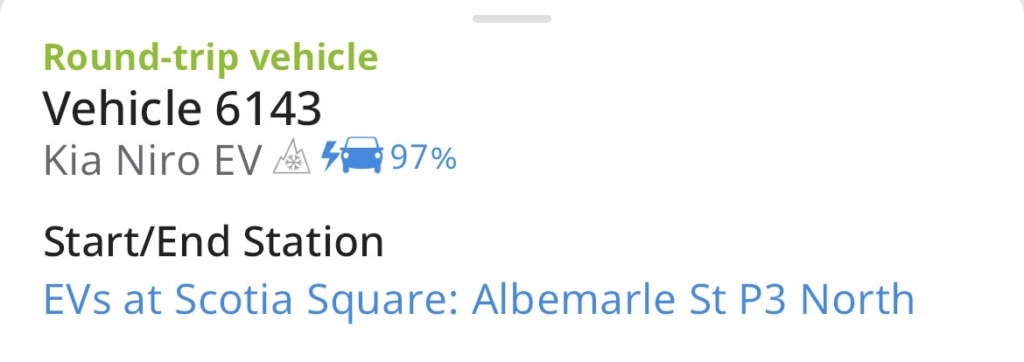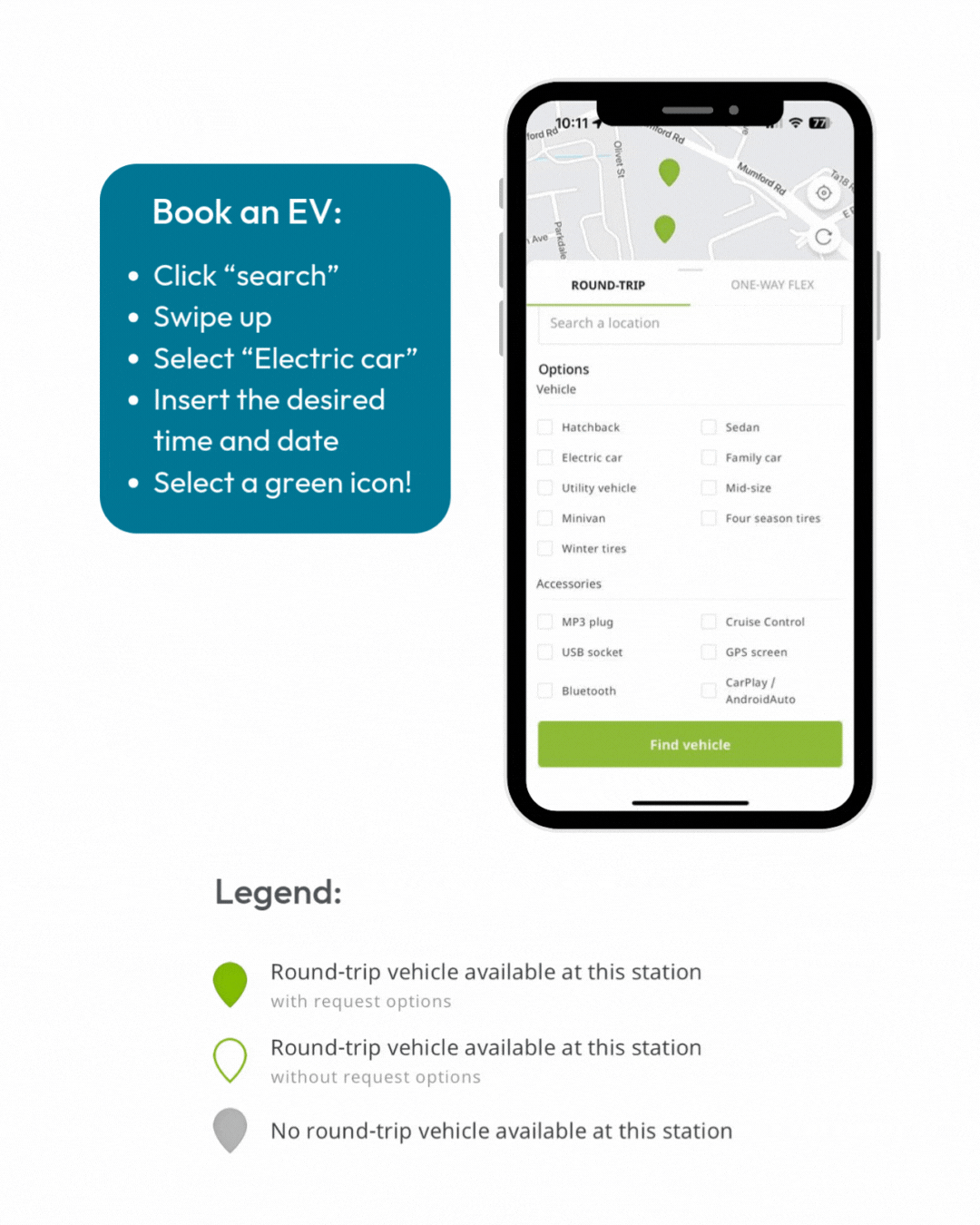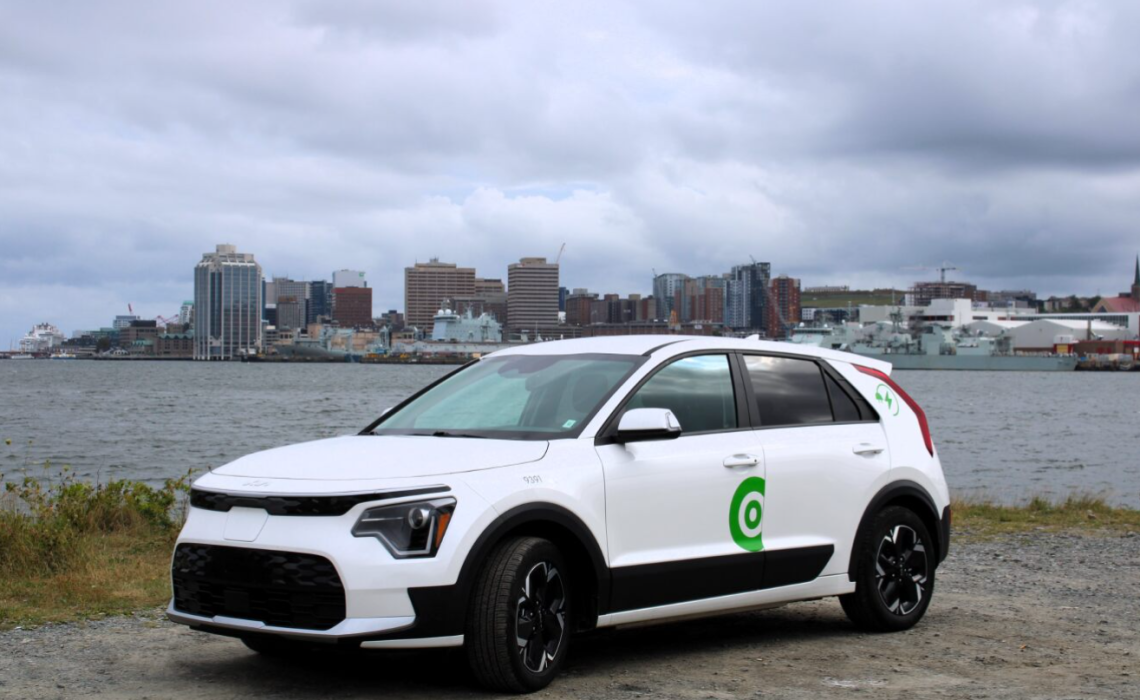Carsharing is a great way to help the environment by reducing the number of cars on the road and lowering overall greenhouse gas emissions. In 2024, Communauto Atlantic made an even bigger impact by adding the first fully electric vehicles to its Halifax fleet.
We now offer fully electric round-trip Kia Niro vehicles, each with its own dedicated EV charger at its station.
The Kia Niro is a versatile option. The car has a range of over 400 km, can recharge in just an hour with a rapid (level 3) charger, and has a trunk space for all your gear.
Shared EVs are such a simple way to try an electric vehicle. You can test one out for a quick trip around town or a long road trip with a little planning.
Finding an EV
Electric vehicles are assigned their own clearly labeled station so you can choose to book an EV or not based on your trip. Here is an example, you can see the station name has EV in it, the car type states EV, and it is marked with a lightning bolt icon.

When searching for a car you can also swipe up to see a variety of search options – including electric cars.

Planning for road trips
Planning and extending battery range
With a range of up to 400 km, our electric cars can easily run errands or take a day trip. But what about longer road trips? There are a few things you can do so your road trip goes smoothly.
First, you should plan where you will charge – does your hotel have an EV charger? Are there public chargers in the town you will be staying in? What other options are available? EV road trips do still require a bit more planning, though some say that is why they are so rewarding!
Next, you should consider your use of the car itself. EV range can be affected by temperature and speed. In the colder months, we recommend you set the heat before driving rather than adjusting up and down throughout your trip which can use more energy.
Similarly, it is recommended that you try to drive consistently. Driving smoothly without quick accelerations or fast braking helps to conserve energy. While we always recommend driving at a safe speed, this is even more important when using an EV. Higher speeds can have a bigger impact on the range.
Electric charging maps
If you want to familiarize yourself with charging locations Nova Scotia Power shows fast charging stations and ChargeHub shows a larger variety – zoom in for the full effect.
Accessing charging during your trip
Electric Circuit cards are available in every 100% electric vehicle. To use a charging station, use the Electric Circuit card located in the key/card holder in the glove box (don’t forget to put it back, otherwise you won’t be able to end your trip properly).
Charging is included in your membership! Members using an EV have free access to all standard (Level 2) and fast-charge (Level 3) charging stations throughout the Electric Circuit network. This includes free access to FLO chargers, which are more common in Nova Scotia.
We do not provide Level 1 charging cables (typically intended for home use) so it is important to plan accordingly if you are making a trip that will require charging.
As with gasoline vehicles, please be ready to pay for charging during your trip using your own payment method. If you have to pay simply submit the receipt for credit via the app.
Charging time
We automatically block a few hours before and after each trip so you will have a nearly full charge for your reservation! But if you are taking a long trip make sure to plan in charging time.
Fully charging the battery (from 0% to 100%) typically takes 1 hour with a rapid charger (level 3), 13 hours with a 220 volt charger (level 2), 60 hours with a 120 volt household outdoor outlet (level 1).
Ending your trip
It is very important to make sure the car is plugged in and charging at the end of your trip, so it is ready for the next user.
Some stations may require additional steps – for example tapping a provided key tag on the charger to activate it. So, make sure you follow all the steps and check the car is charging before you leave. A flashing indicator light located under the center of the windshield will allow you to confirm that the vehicle is charging.
Fees may apply if the car is not charging, and repeated issues can even result in your account being blocked from using EVs.
Watch this handy video to see how the car charges. Our cards in Halifax look a little different, but the steps are the same!
Hopefully, you now feel ready to take a road trip in an EV. But if you are still wary, consider starting with a quick trip to run a few errands and get used to driving an electric car and how charging works. You might be surprised by how easy it is if you give it a try.
